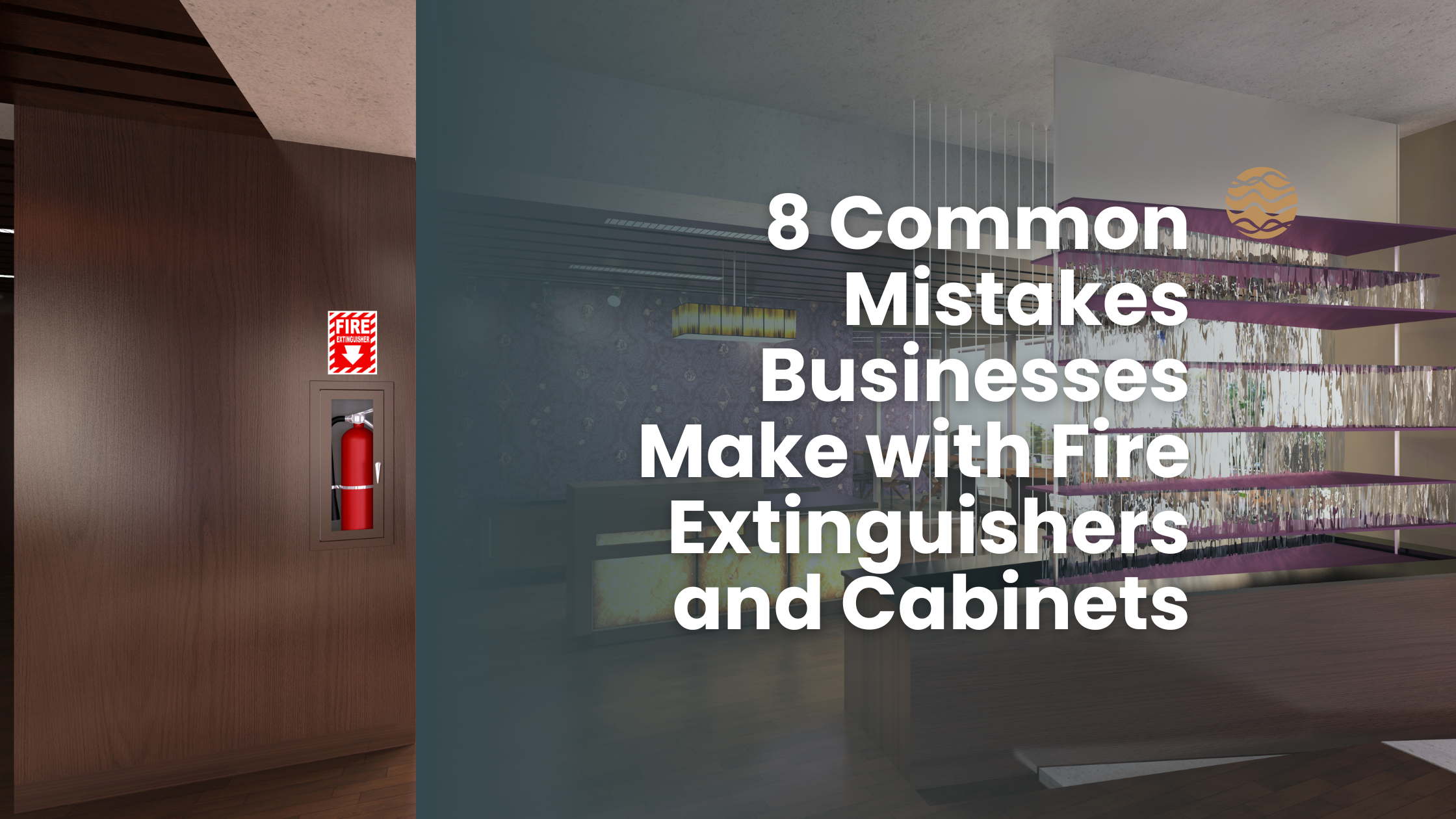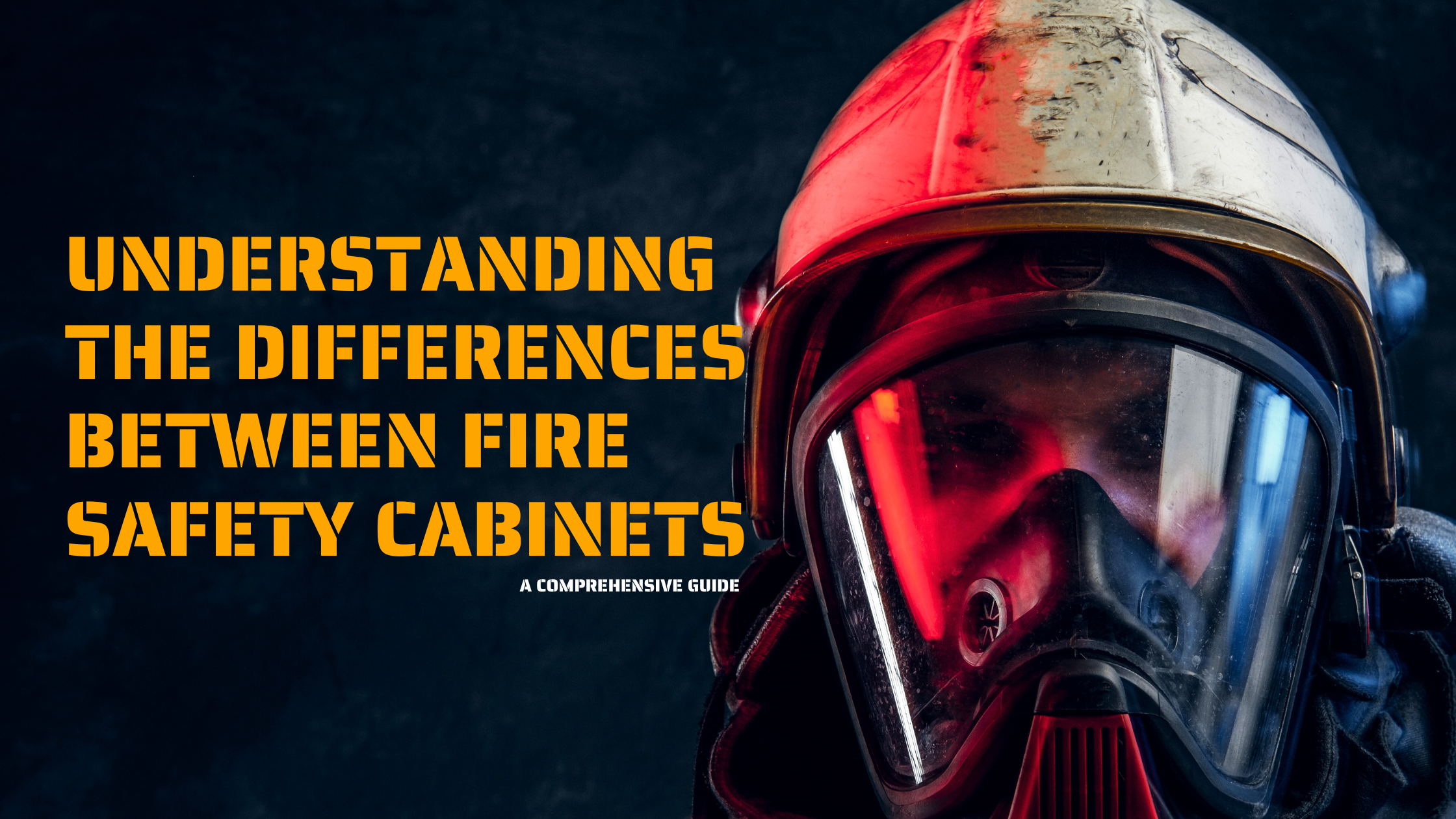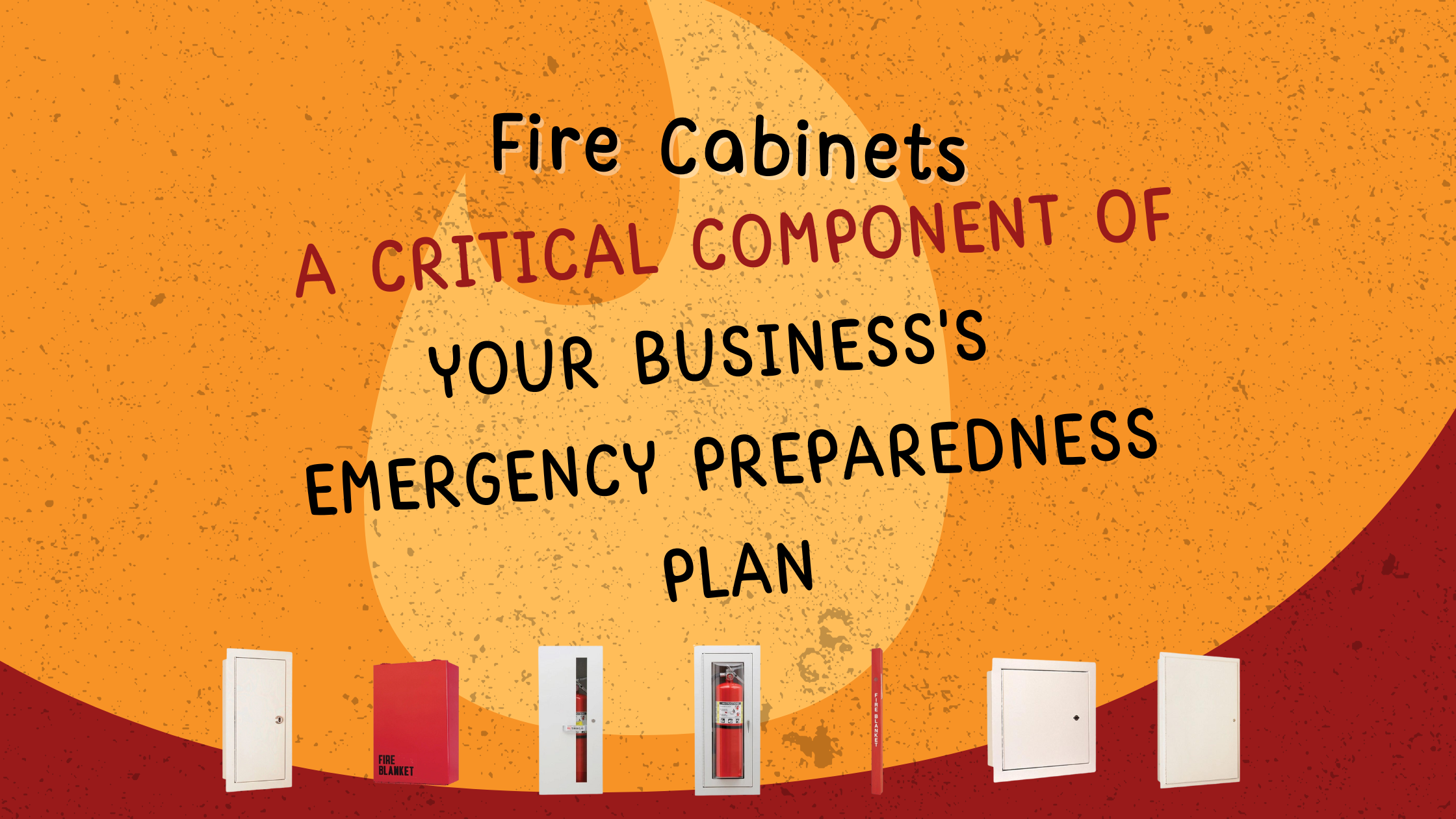8 Common Mistakes Businesses Make with Fire Extinguishers and Cabinets

...and how to avoid them.
Fire extinguishers and cabinets are essential components of a business's fire safety strategy, designed to provide easy access to firefighting equipment in an emergency. However, many businesses inadvertently make mistakes in their usage and maintenance of fire extinguishers and cabinets, which can compromise their effectiveness. In this blog, we'll explore some common mistakes businesses make with fire extinguishers and cabinets and provide tips on how to avoid them.
1. Inadequate Signage
Mistake: Lack of clear signage can make it difficult for employees and visitors to locate fire extinguishers and cabinets quickly in an emergency.
How to Avoid: Install prominent, easily visible signs that clearly indicate the location of fire extinguishers and cabinets. Use universally recognized symbols and colors to enhance visibility, even in low-light conditions.
2. Blocking Fire Extinguishers & Cabinets
Mistake: Another common mistake is blocking fire extinguishers and cabinets with furniture, equipment, or other items. This can severely hinder access to essential firefighting equipment during an emergency, delaying response times and potentially exacerbating the situation.
How to Avoid: Conduct a thorough risk assessment to determine strategic locations for fire extinguishers and cabinets. Ensure that fire extinguishers and cabinets are always kept clear of obstructions. Conduct regular inspections to verify that the area around each fire extinguishers is free from any items that could impede access. Educate employees about the importance of keeping these areas unobstructed and include this check in your routine safety audits.
3. Neglecting Regular Maintenance
Mistake: Failing to perform regular maintenance checks can lead to firefighting equipment becoming non-functional when needed. This includes issues like expired fire extinguishers, damaged hoses, or obstructed nozzles.
How to Avoid: Establish a routine maintenance schedule to inspect and service fire extinguishers and cabinets and their contents. Assign a designated team or individual responsible for these inspections and keep detailed records of each maintenance activity.
4. Lack of Employee Training
Mistake: Employees who are untrained or inadequately trained in using the firefighting equipment stored in fire cabinets can hinder an effective emergency response.
How to Avoid: Implement regular training sessions for all employees, focusing on the correct usage of fire extinguishers and other equipment stored in fire cabinets. Conduct fire drills to provide practical, hands-on experience and reinforce training.
5. Overloading Fire Extinguishers and Cabinets
Mistake: Some businesses make the mistake of overloading fire extinguishers and cabinets with non-essential items, making it difficult to access the critical firefighting equipment during an emergency.
How to Avoid: Use fire extinguishers and cabinets exclusively for storing firefighting equipment. Avoid the temptation to use for storing cleaning supplies, tools, or other unrelated items. Regularly audit the contents to ensure compliance.
6. Failing to Integrate with Other Fire Safety Systems
Mistake: Not integrating fire extinguishers and cabinets with other fire safety systems, such as alarms and sprinklers, can reduce the overall effectiveness of your fire response strategy.
How to Avoid: Ensure fire extinguishers and cabinets are part of a cohesive fire safety system. Coordinate their placement and usage with fire alarms, sprinkler systems, and emergency evacuation plans. This integrated approach enhances overall safety and efficiency.
7. Non-Compliance with Regulations
Mistake: Ignoring local fire safety regulations and standards can result in fines, legal liabilities, and increased risk during a fire emergency.
How to Avoid: Stay informed about local fire safety regulations and standards. Ensure that your fire extinguishers and cabinets and related practices comply with these requirements. Regularly review and update your compliance measures as regulations change.
8. Assuming "Set It and Forget It"
Mistake: Some businesses assume that once fire extinguishers and cabinets are installed, no further action is needed, neglecting ongoing attention and updates.
How to Avoid: Adopt a proactive approach to fire safety. Continuously review and improve your fire safety practices, including the placement, maintenance, and training related to fire extinguishers and cabinets. Regularly update your emergency preparedness plan to reflect any changes in your business environment or operations.
Fire cabinets are a crucial element of any business's fire safety strategy, but their effectiveness depends on proper implementation and maintenance. By avoiding these common mistakes—improper placement, inadequate signage, neglecting maintenance, lack of training, overloading, failure to integrate, non-compliance, and a "set it and forget it" mentality—you can ensure that your fire cabinets are ready to perform their vital role in an emergency. Prioritize regular inspections, employee training, and adherence to regulations to create a safer, more prepared workplace.
Nystrom carries a complete line of architectural fire cabinets, extinguishers and accessories to meet all fire safety needs. Our designs complement all interior decor with the ability to meet or exceed your specifications. Matched with our complete line of fire extinguishers, Nystrom is your choice for fire protection. For more information, please contact Customer Sales & Support or visit our website.




